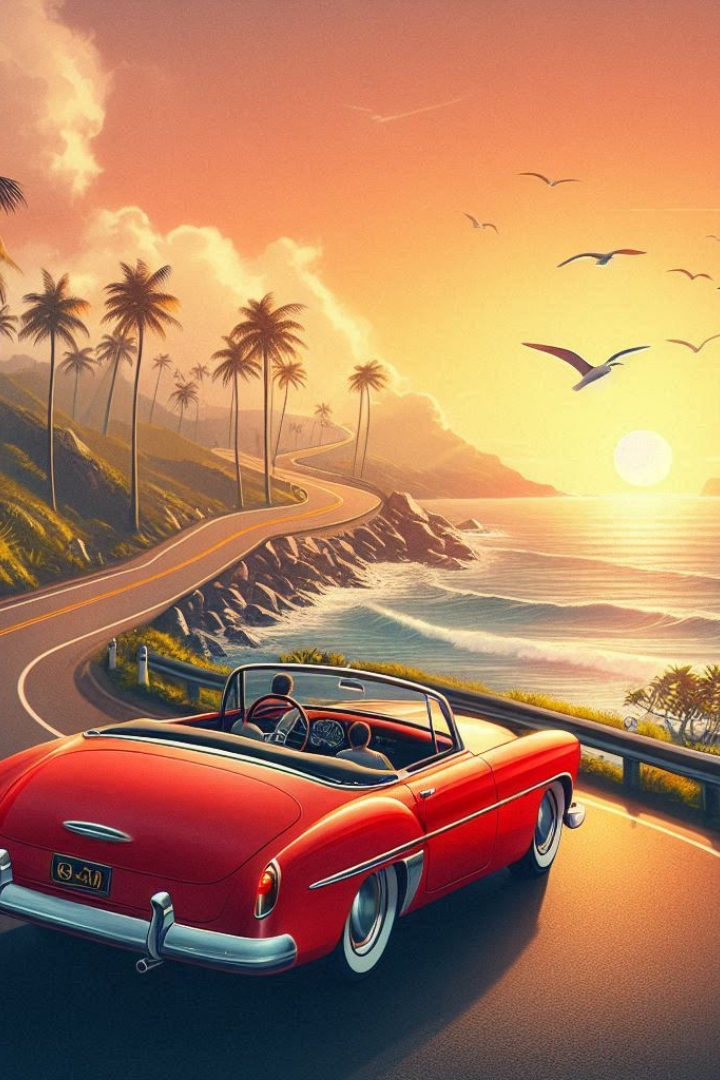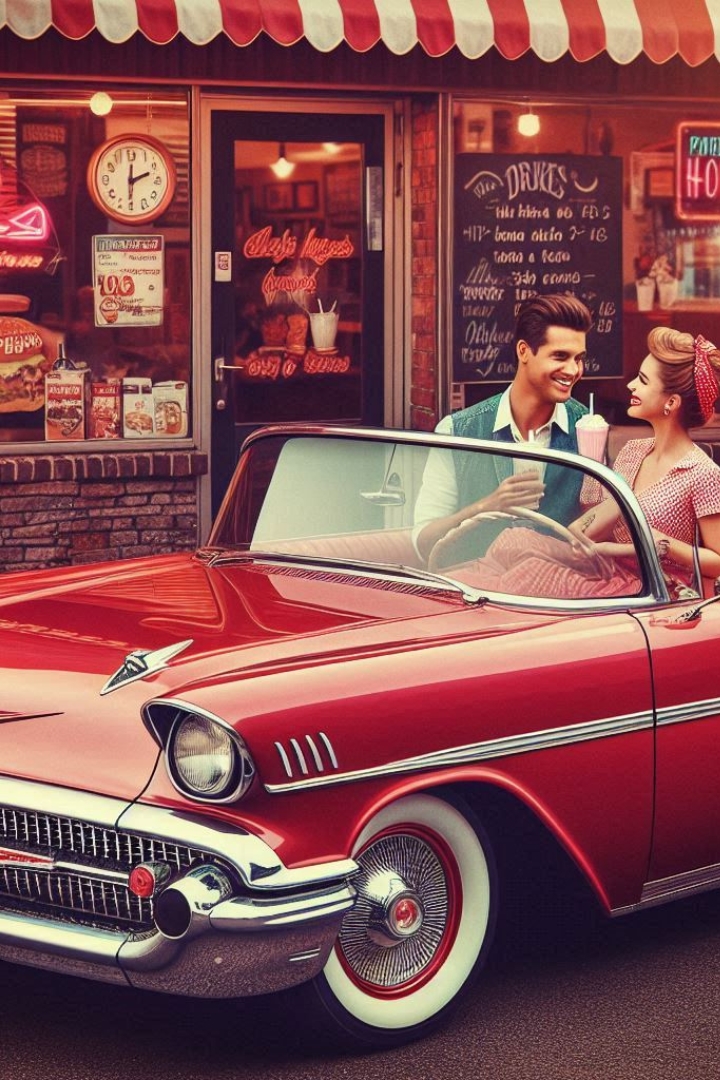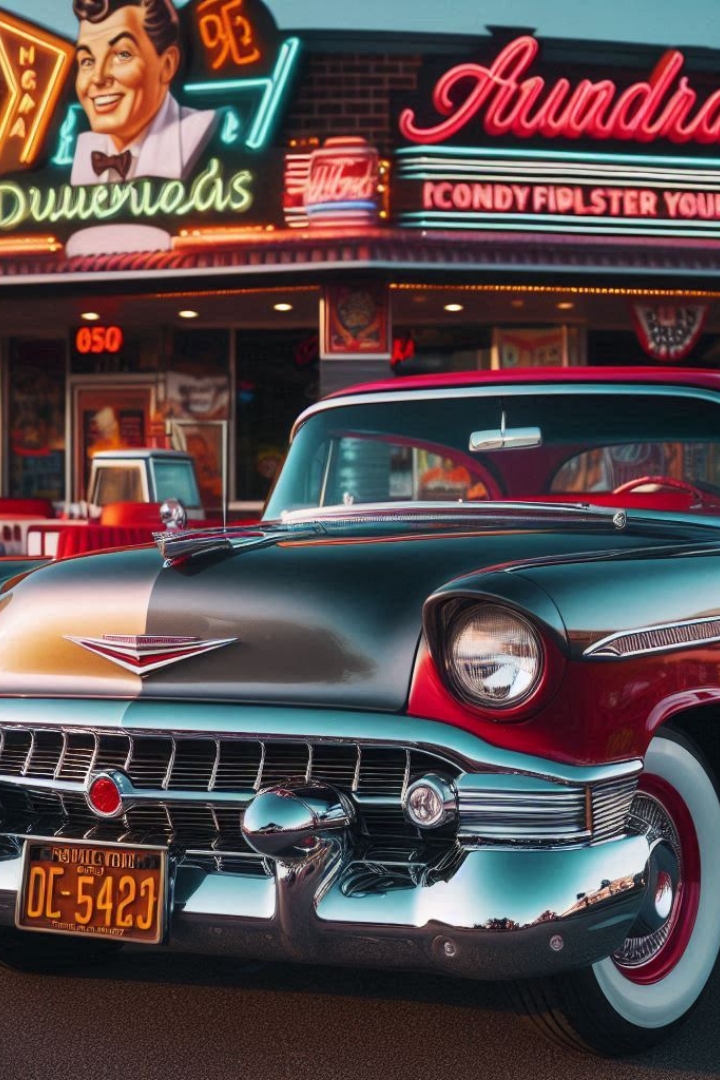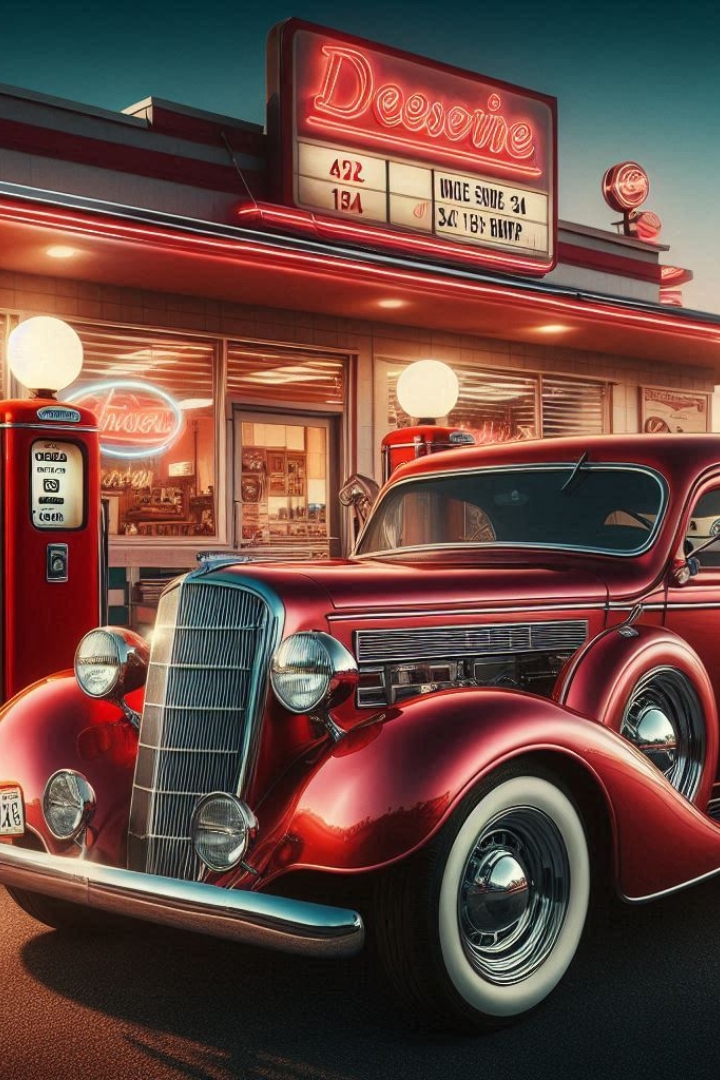The Best Allure of Classic Cars: A Timeless Passion 17
Table of Contents
- The Allure of Classic Cars: A Timeless Passion 17
- A Brief History
- Design and Engineering
- Cultural Significance
- The Passion for Restoration
- Investing in Classic Cars
- The Evolution of Car Culture
- The Art of Collecting Classic Cars
- The Future of Classic Cars
- Iconic Classic Cars
- Classic Cars in Media and Pop Culture
- The International Appeal of Classic Cars
- The Restoration Process: A Labor of Love
- Conclusion
- FAQs About Classic Cars
A Brief History
The history of classic cars is intertwined with the evolution of the automobile industry itself. The early 20th century saw the birth of the automobile, with manufacturers like Ford, Chevrolet, and Cadillac leading the way. The introduction of assembly line production by Henry Ford in 1913 revolutionized car manufacturing, making automobiles more accessible to the public.
The 1950s and 1960s are often regarded as the golden age of classic cars. During this time, automotive design emphasized style and performance. Cars like the Chevrolet Bel Air, the Porsche 911, and the Mercedes-Benz 300SL Gullwing became icons of automotive excellence. These vehicles were not just modes of transportation; they were symbols of status and sophistication
Design and Engineering
One of the defining characteristics of classic cars is their distinct design and engineering. Unlike modern cars, which often prioritize aerodynamics and fuel efficiency, classic cars were designed with a focus on aesthetics and individuality. Each model had its own unique charm, often characterized by bold lines, chrome accents, and luxurious interiors.
The engineering of classic cars also reflects the technological advancements of their time. Many classic cars featured innovative technologies such as V8 engines, independent suspension systems, and advanced braking systems. These innovations contributed to the exceptional performance and driving experience that classic cars are known for.
Cultural Significance
Classic cars hold a special place in popular culture, often representing freedom, adventure, and the spirit of the open road. They have been immortalized in films, music, and literature, serving as symbols of rebellion and independence. Movies like “Bullitt” and “Gone in 60 Seconds” have showcased classic cars in thrilling chase scenes, further cementing their status as cultural icons.
Car shows and auctions dedicated to classic cars attract enthusiasts from all walks of life, creating a vibrant community of collectors and fans. These events provide a platform for showcasing meticulously restored vehicles and celebrating the craftsmanship and artistry that go into preserving these automotive treasures.

The Passion for Restoration
Restoring classic cars is a labor of love that requires dedication, patience, and expertise. Many enthusiasts take on the challenge of bringing old cars back to life, often spending years sourcing original parts and meticulously recreating the vehicle’s original condition. The process of restoration not only preserves the car’s historical value but also provides a deep sense of satisfaction and accomplishment for those involved.
Restoration also plays a crucial role in the sustainability of classic cars. By refurbishing and maintaining these vehicles, enthusiasts ensure that future generations can appreciate and enjoy the rich heritage of automotive history.
Investing in Classic Cars
In recent years, classic cars have gained popularity as a form of investment. The value of certain models has appreciated significantly, making them attractive to collectors and investors alike. However, investing in classic cars requires careful consideration of factors such as rarity, condition, provenance, and market trends.
While some investors focus on the potential financial returns, many are drawn to the intrinsic value and enjoyment that classic cars offer. Owning a classic car is not just about possessing a valuable asset; it’s about experiencing the joy of driving a piece of history and connecting with a bygone era.
The Evolution of Car Culture
The Post-War Boom
After The Second Great War, the auto business encountered a flood in development and imagination. Makers explored different avenues regarding intense plans and new advancements to satisfy the needs of an undeniably prosperous society. This period saw the ascent of muscle vehicles, sports vehicles, and extravagance vehicles that stressed power, style, and solace.
In the US, the muscle vehicle development picked up speed during the 1960s with models like the Pontiac GTO, Passage Horse, and Avoid Charger. These vehicles were furnished with elite execution motors and were showcased to a more youthful crowd energetic for speed and energy. In the mean time, in Europe, brands like Ferrari, Aston Martin, and Puma were creating smooth games vehicles that became inseparable from style and execution.
The Art of Collecting Classic Cars
What Makes a Classic Car Valuable?
The value of a classic car is influenced by several factors, including rarity, historical significance, condition, and provenance. Limited production models, cars with racing pedigrees, and those associated with notable personalities often command higher prices at auctions.
Rarity is a critical determinant of value. Cars that were produced in limited numbers or have unique features are more likely to appreciate in value over time. Additionally, cars that have been well-maintained or restored to their original specifications tend to be more desirable to collectors.
The Importance of Provenance
Provenance refers to the documented history of a car, including its ownership, usage, and any significant events or modifications. A well-documented provenance can enhance a car’s value by providing insight into its past and verifying its authenticity.
For example, a classic car that was once owned by a celebrity or participated in a famous race may have a higher value due to its historical significance. Collectors often seek out cars with compelling stories, adding an element of intrigue and prestige to their collections.
Restoration vs. Preservation
When it comes to classic cars, enthusiasts often face the dilemma of whether to restore or preserve a vehicle. Restoration involves returning a car to its original condition, often requiring extensive work on the body, engine, and interior. This process can be labor-intensive and costly, but it can also significantly increase the car’s value and appeal.
Preservation, on the other hand, focuses on maintaining a car’s originality, including its patina and wear. Some collectors prefer preservation to showcase the car’s authenticity and historical integrity. This approach highlights the vehicle’s journey through time, allowing its age and history to be appreciated in their unaltered form.

Challenges Facing Classic Cars
As the world becomes increasingly focused on environmental sustainability, classic cars face challenges due to their older technology and less efficient engines. Many classic cars were built before modern emissions standards, contributing to higher levels of pollution compared to contemporary vehicles.
To address these concerns, some enthusiasts are exploring eco-friendly restoration practices and alternative fuels. Converting classic cars to run on electric power has become a popular trend, allowing owners to enjoy the classic car experience while reducing their environmental impact.
Legal and Regulatory Issues
Exemplary vehicle proprietors frequently experience lawful and administrative obstacles connected with enlistment, wellbeing guidelines, and emanations. In certain districts, rigid outflows guidelines make it hard to enlist and drive exemplary vehicles on open streets. Also, security guidelines have advanced altogether since numerous exemplary vehicles were made, raising worries about their roadworthiness in present day rush hour gridlock conditions.
Lover associations and support bunches work to safeguard the privileges of exemplary vehicle proprietors, campaigning for regulation that perceives the authentic and social worth of these vehicles while advancing dependable use and conservation.
The Future of Classic Cars
The Rise of Digital Tools
The methodology of mechanized advancement has transformed how praiseworthy vehicle devotees restore and stay aware of their vehicles. Online resources, conversations, and business focuses give induction to an overflow of information and fascinating parts that were once difficult to find. Expanded reality and 3D printing advancement moreover offer creative solutions for reconstructing, allowing aficionados to make careful impersonations of remarkable parts.
The Next Generation of Enthusiasts
As the exemplary vehicle local area develops, there is a developing accentuation on connecting with more youthful ages. Instructive projects, intelligent displays, and virtual entertainment crusades mean to move another influx of devotees who will proceed with the practice of appreciating and protecting exemplary vehicles.
Mentorship projects and apprenticeships offer open doors for youngsters to become familiar with the abilities and craftsmanship expected for reclamation, guaranteeing that the information and energy for exemplary vehicles are passed down to people in the future.
Iconic Classic Cars
Ford Mustang
The Portage Foal is perhaps of the most infamous American commendable vehicle. Introduced in 1964, it promptly transformed into a picture of chance and execution. The Horse’s smooth arrangement, sensible expense, areas of strength for and decisions made it a main among vehicle sweethearts. The first Foal (1964-1973) consolidated a couple of significant models, similar to the 1965 Pony GT and the 1969 Boss 429, which are extraordinarily sought after by finders today.
Classic Cars in Media and Pop Culture
Film and Television
Classic cars have played a prominent role in film and television, often serving as symbols of style, power, and rebellion. Iconic movies like “Bullitt” (1968) featured Steve McQueen’s famous car chase in a Ford Mustang GT, while “The Italian Job” (1969) showcased a fleet of Mini Coopers in a daring heist.
Music and Literature
Exemplary vehicles have been commended in music and writing, frequently representing opportunity, experience, and sentiment. Tunes like “Minimal Red Corvette” by Ruler, “Colt Sally” by Wilson Pickett, and “Thunder Street” by Bruce Springsteen have deified exemplary vehicles in the melodic scene.
In writing, exemplary vehicles frequently act as allegories for ventures, both exacting and allegorical. Books as kerouac Jack’s “Out and about” encapsulate the open street and the feeling of investigation that exemplary vehicles epitomize.

The International Appeal of Classic Cars
European Classics
European classic cars, such as the Aston Martin DB5, Alfa Romeo Spider, and Mercedes-Benz 300SL, have gained worldwide recognition for their design, performance, and prestige. These vehicles often emphasize craftsmanship and innovation, appealing to collectors who appreciate European automotive heritage.
The British car industry, in particular, has produced numerous classics that have left a lasting impact, including the Mini, the Triumph TR6, and the Rolls-Royce Silver Shadow. These cars are celebrated for their distinctive charm and engineering excellence.
Japanese Classics
Japanese exemplary vehicles, however at times eclipsed by their European and American partners, have a devoted following. Models like the Toyota 2000GT, the Datsun 240Z, and the Mazda RX-7 are perceived for their unwavering quality, execution, and remarkable plan. The 1970s and 1980s saw the ascent of Japanese games vehicles, which offered a reasonable option in contrast to European and American models, adding to their fame.
The Global Community
The classic car community is truly global, with enthusiasts and collectors found in every corner of the world. International events, such as the Mille Miglia in Italy and the Le Mans Classic in France, attract participants and spectators from various countries, highlighting the universal appeal of classic cars.
Online platforms and social media have further connected classic car enthusiasts worldwide, allowing them to share their passion, exchange knowledge, and showcase their vehicles to a broader audience. This global community ensures that the appreciation for classic cars transcends cultural and geographical boundaries.
The Restoration Process: A Labor of Love
Assessing the Condition
The restoration of a classic car begins with a thorough assessment of its condition. This involves evaluating the car’s body, chassis, engine, and interior to determine the extent of work needed. Rust, structural damage, and worn-out parts are common issues that restorers must address. The goal is to preserve as much of the original material as possible while ensuring the car’s safety and functionality.

Conclusion
Classic cars represent a unique blend of artistry, engineering, and history, captivating enthusiasts and collectors worldwide. The restoration process is a labor of love, requiring dedication, skill, and attention to detail to bring these vehicles back to their former glory. The economic aspects of classic cars, including investment potential and ownership costs, highlight the complexities of collecting and maintaining these treasures.
As technology and societal values evolve, the classic car community continues to adapt, exploring innovative ways to preserve and celebrate these vehicles. By engaging the next generation and promoting sustainability, enthusiasts ensure that classic cars remain a cherished part of our cultural heritage.
FAQs About Classic Cars
Buying Classic Cars
- What should I consider before buying a classic car?
Before purchasing a classic car, consider factors such as your budget, the car’s condition, historical significance, and availability of parts. It’s also important to research the model’s market value and consult experts or enthusiasts to ensure you make an informed decision.
- Where can I buy a classic car?
Classic cars can be purchased from a variety of sources, including online marketplaces, classic car auctions, dealerships specializing in vintage vehicles, and private sellers. Each option has its advantages, so choose one that aligns with your preferences and offers transparency about the car’s history and condition.
- How do I determine the value of a classic car?
The value of a classic car is determined by factors such as rarity, condition, originality, and historical significance. You can consult classic car price guides, auction results, and expert appraisers to get an accurate estimate of a car’s value.
- What is a “barn find”?
A “barn find” refers to a classic car that has been discovered after being stored for many years, often in barns or garages. These cars are usually in original, unrestored condition and can be valuable due to their rarity and untouched history.
Restoring Classic Cars
- How much does it cost to restore a classic car?
The cost of restoring a classic car varies widely based on the car’s condition, the extent of restoration required, and the availability of parts. Restoration can range from a few thousand dollars to over $100,000, especially for rare or highly sought-after models.
- Can I restore a classic car myself?
Restoring a classic car yourself is possible if you have the necessary skills, tools, and time. Many enthusiasts enjoy the process as a rewarding hobby. However, some tasks, like bodywork and engine rebuilding, may require professional expertise.
- How do I find parts for my classic car restoration?
Parts for classic cars can be found through online marketplaces, specialty retailers, swap meets, and car clubs. Joining forums and networks of enthusiasts can also help you connect with sellers or find rare components.
- Should I focus on originality or customization when restoring a classic car?
Whether to prioritize originality or customization depends on your goals and preferences. Original restorations maintain historical accuracy and can increase the car’s value, while customization allows for personal expression and modern upgrades.
Maintaining Classic Cars
- How do I maintain a classic car?
Regular maintenance is essential to keep a classic car in good condition. This includes routine checks of the engine, brakes, and electrical systems, as well as keeping the car clean and protected from the elements. Using high-quality oils and fluids specifically designed for older vehicles is also important.
- How should I store my classic car?
Classic cars should be stored in a dry, climate-controlled environment to prevent rust and deterioration. Covering the car with a breathable cover and elevating it on jack stands can help preserve the tires and suspension during long-term storage.
- What insurance options are available for classic cars?
Classic car insurance typically offers agreed-value coverage, which ensures the car is insured for its appraised value. Policies may also include mileage limitations and coverage for restoration costs. It’s important to choose a policy that suits your needs and driving habits.
Enjoying Classic Cars
- What are some popular events for classic car enthusiasts?
Classic car enthusiasts can attend a variety of events, such as car shows, concours d’elegance, auctions, and vintage car rallies. These events provide opportunities to showcase vehicles, connect with other enthusiasts, and learn about automotive history.
- Can I drive my classic car regularly?
While classic cars can be driven regularly, it’s important to consider their maintenance needs, fuel efficiency, and reliability. Many owners choose to drive their classic cars for leisure or special occasions to preserve their condition.
- How can I connect with other classic car enthusiasts?
Joining classic car clubs, attending events, and participating in online forums and social media groups are great ways to connect with other enthusiasts. These communities offer support, advice, and camaraderie for those passionate about classic cars.
- Are there resources for learning more about classic cars?
There are numerous resources available for learning about classic cars, including books, magazines, online publications, and documentaries. Joining a car club or participating in workshops can also provide valuable hands-on experience and knowledge.

